Microsoft Details Project Olympus Open Compute Standard
by Brett Howse on March 8, 2017 10:15 PM EST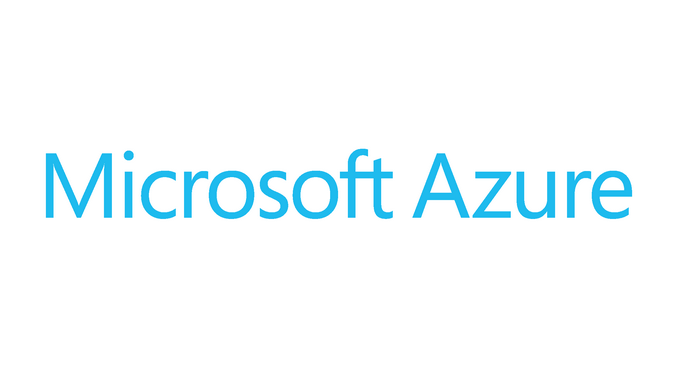
Today, at the 2017 Open Compute Project U.S. Summit, Microsoft unveiled some significant announcements around their hyperscale cloud hardware design, which they first announced in November as Project Olympus. With the explosion of growth in cloud computing, Microsoft is hoping to reduce the costs of their Azure expansion by creating universal platforms in collaboration with the Open Compute Project. Project Olympus is more than just a server standard though. It consists of a universal motherboard, power supplies, 1U and 2U server chassis, power distribution, and more. Microsoft isn’t the first company to want to go down this road, and it makes a lot of sense to cut costs by creating standards when you are buying equipment on the level of Azure.
The company made several big announcements today, with the first one coming somewhat as a surprise, but when you read between the lines, it makes a lot of sense. Microsoft is partnering with Qualcomm and Cavium to bring ARM based servers to Azure. This is a pretty big shift for the company, since they have focused more on x86 computing, and changing to a new ISA is never a small task, so Microsoft is clearly serious about this move.
Microsoft Distinguished Engineer Leendert van Doorn expanded on why the company is exploring this option in a blog post today. Clearly ARM has made some progress in the server world over the last few years, and Microsoft feels it’s the right time to bring some of that capability to their own datacenters. I think one of the key takeaways is that Microsoft wants to shape the hardware capabilities to the workload, and with an open platform like ARM, this can make a lot of sense for certain workloads. He points out that search and indexing, storage, databases, big data, and machine learning, are all named as potential workloads, and in cloud computing, these are all significant in their own right.
Qualcomm Centriq 2400 Platform
Microsoft already has a version of Windows Server running on ARM, and they’ve announced that both of their partners will be demonstrating this internal use port of Windows Server, first with Qualcomm with their Centriq 2400 processor, with 48 cores on Samsung’s 10nm FinFET process. Cavium will be running on their second generation ThunderX2 platform. Our own Johan De Gelas did a thorough investigation of the original ThunderX platform in June 2016 and it is certainly worth a read. The takeaways were that Cavium needed to do a lot of work on power management, and they had some big performance bottlenecks, so they offered inferior performance per watt compared to a Xeon D, but better than advertised single-threaded performance with SPEC 2006 results only 1/3 the Xeon results, rather than the 1/5 that was advertised. If Cavium has fixed some of the issues, especially power consumption, the new ThunderX2 might be a compelling solution for specific tasks.
Cavium ThunderX2 Platform
That is really the kicker though. The ARM platform, if properly executed, should be a good solution for some specific tasks, and if Microsoft can work with the platform makers to shape the hardware to fit specific tasks, but still be more general purpose than an ASIC, but at this time, it’s unlikely to be a serious threat to Intel’s monopoly on the datacenter at the moment. Intel has a pretty sizeable advantage in IPC, and especially on single-threaded workloads, so x86 isn’t going anywhere yet. What really matters is how Qualcomm and Cavium can execute on their platforms, and where they price them, since the end goal for Microsoft with this change is certainly, at least to some extent, to put pressure on Intel’s pricing for their datacenter equipment.
Back on the x86 side, Microsoft also had some announcements there as well. AMD will also be collaborating with Microsoft to include their Naples processor into Project Olympus, which is their new server processor based on the “Zen” architecture. Although much of the news today has been around the ARM announcement, this is arguably the bigger play. Ryzen has already shown it is very competitive with Core, and Naples could be very strong competition for Xeon. We’ll have to wait for the launch to know for sure.
Microsoft didn’t abandon Intel either, and they announced close collaboration with Intel as well. This will be not only for Intel’s general purpose CPUs, but also for Intel’s FPGA accelerators and Nervana support. Microsoft already has FPGAs in Azure, so adding them to Project Olympus is a no-brainer.
Microsoft also announced a partnership with NVIDIA today, bringing the HGX-1 hyperscale GPU accelerator to Project Olympus. HGX-1 is targeted at AI cloud computing, which is certainly an area where there has been tremendous growth. Each HGX-1 will be powered by eight NVIDIA Tesla P100 GPUs, each with 3584 Stream Processors, based on the GP100 chip, and a new switching design based on NVIDIA NVLink and PCIe which allows a CPU to connect to any number of GPUs dynamically. NVIDIA states the HGX-1 provides up to 100x faster deep learning performance compared to CPU-based servers.
This is a pretty substantial update today for Project Olympus, and it looks to be an incredibly modular platform. Anyone reading that Microsoft is dropping Intel for ARM in Azure is misunderstanding this goal. Looking at the platform as a whole, it is abundantly clear that Microsoft wants a platform that can be designed to work with any workload, and still offer optimal performance, and efficiency. Some tasks will be best on ARM, some on x86, while GPUs will be leveraged for performance gains where possible, and FPGAs being utilized for other tasks. When you look at computing on the scale of something like Azure, it only makes sense to dedicate hardware to specific workloads, since you’ll certainly have enough different workloads to make the initial effort worthwhile, and that isn’t always the case when looking at small business, medium business, or even most enterprise workloads.
Source: Microsoft Azure Blog


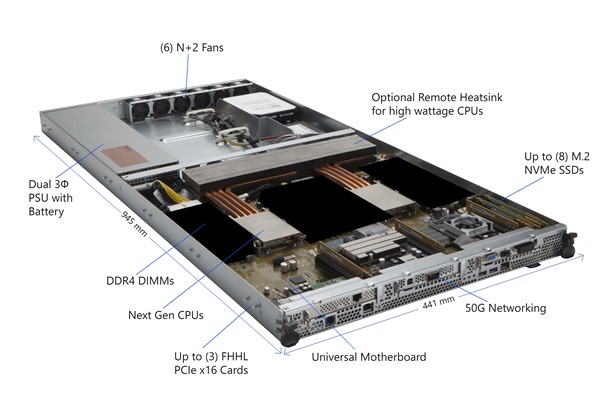
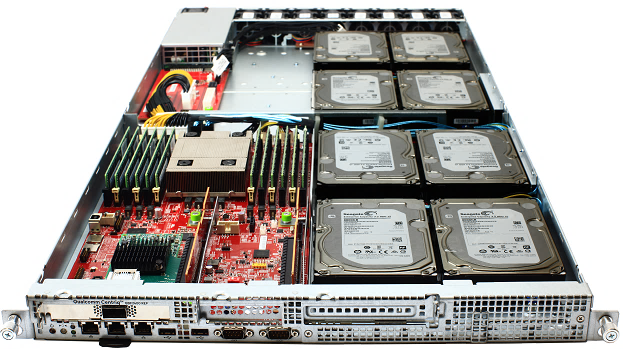
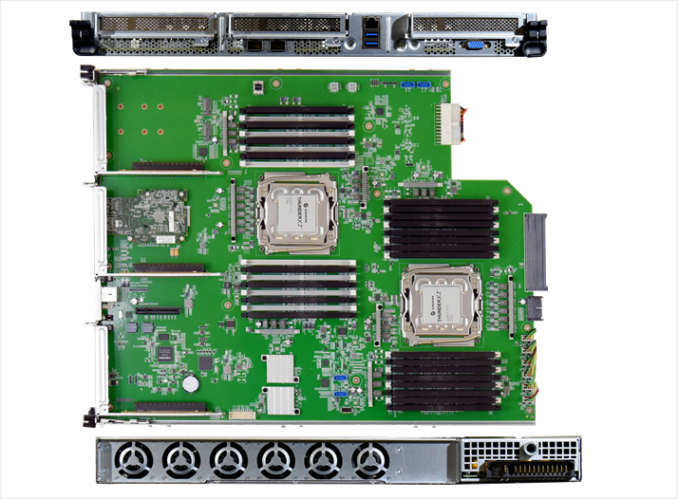
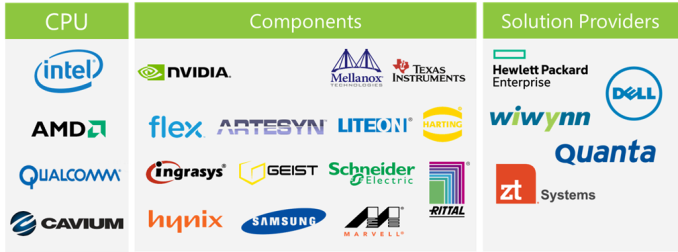









65 Comments
View All Comments
ddriver - Friday, March 10, 2017 - link
You are too much of a wishful "thinker", it is most likely you who got offended for being called out to be cattle cheering at its master's success :)Evidently, you too don't know what idealism and realism is, like so many of them cattle people. Let me enlighten you:
Idealism as a school of thought can be traced back to the days of ancient Greece, with its pioneer being Socrates. Idealism is the notion that the world is created by a supernatural deity in its "ideal" state, and that's the only way things can be, because the gods intended it this way. Note that it is "ideal" not relative to individual people, but to the world's creators. The gods wanted things to be this way, so things are this way, and people cannot ever change that.
Realism is the school of thought, was developed too in ancient Greece, by no other than Plato - Socrates' pupil. It is a fundamental departure from idealism, the notion that reality is shaped by following certain rules, chains of action, effect and reaction. A world which people can understand the operational principles of, and alter them to alter and improve their reality.
If you still have at least 2 working bran cells, you'd be able to realize two important things:
1 - in truth, idealism and realism are the exact opposite of what most "people" believe they are. This is not a coincidence, as those kind of "people" are victimized by social indoctrination to settle for the world as others made it for them, so their concept of the more important and establishment threatening realism has been tainted into the notion that a realist just says to himself "well, that's how things are, and you cannot do anything about it, and you'd be foolish to think you can", which is in reality as-much-as-it-gets idealism, while realists - the people who understand how things work and see ways to improve them, are being labeled "naive idealistic fools who foolishly believe things can change". "People" like you - they are not supposed to think or believe that the world can be any different than what the establishment makes it to be, people like you have been trained to believe yourselves better for settling for their world, and fcheering as the corporate world builds its better means to take from people even more in order to appear tech savy is just an instance of it.
2 - it is you who is the naive, ignorant idealist. And subconsciously you know it, thus the attempts to insinuate things like be feeling offended or being emotionally driven. And understandably, for someone driven by ignorance and utter lack of understanding, it is the best you can do.
BrokenCrayons - Friday, March 10, 2017 - link
I only skimmed your post so I'm sorry if I missed the nuances of it, but I'm guessing you don't want to accept my apology for upsetting you. I did see Socrates in there though so that's pretty interesting!ddriver - Friday, March 10, 2017 - link
There is nothing to accept as you did not upset me the slightest. I however evidently did, judging by your insinuations of me being upset. I know you don't have a lot to fool yourself into being smart with, so sorry for spoiling this one thing for you. I am sure you have legitimate reasons to applaud and cheer at M$'s initiative other than pretending to be intelligent and progressive, and it will benefit your so called "business" tremendously.BrokenCrayons - Friday, March 10, 2017 - link
I really don't understand your thought processes here. Because I'm not on a soapbox trying to discredit Microsoft's internal business practices in the discussion of a product the company is developing doesn't mean I'm a drooling fan girl of the company. I just don't see a reason to drag corporate ethics into a discussion about a project the company is working on because it accomplishes and changes absolutely nothing and wastes keystrokes. It's no different than not caring to rant about NVidia every time Anandtech reviews a GPU they released or a driver update they've issued. What's the point? Aside from polarizing the opinions of readers against one another and causing little nerd hair pulling and pinching fights, it accomplishes nothing.Nor does it make sense to me to lord myself over other people in a serious manner. Sure, I like to toy with people a little, but taking anything on the internet seriously enough to try to drag a history and philosophy lesson into it speaks a lot about how far someone wants to go to make sure their darned point is the most shiny and best looking point in the comments section. A point that's sure to win points with all the other readers who give loads and loads about what happens to ddriver and BrokenCrayons' text wall posts.
I mean really...if you don't care, what are you still doing here and why are you still trying to invent my side of an argument for me? You do must realize at this point that the only person you're arguing with is yourself because you're making up my position for me in order to make a case against something.
eddman - Saturday, March 11, 2017 - link
Just admit you hate MS, no matter what they do or don't, and be done with it.ddriver - Thursday, March 9, 2017 - link
What does M$ care about intel's monopoly? They do not have competing products. Both are monopolies, build through decades of mutual assistance.It is just a show for the public. M$s OS is lousier than ever, so now they are playing philanthropist, hiding their rotten plans behind facades of noble initiatives.
We've seen arm failing to compete. We've seen power failing to compete. Both have had ample time to mature their offerings, and yet they still fail miserably, even in the face of intel's product line, which has been stagnant due to complete and utter lack of competition.
Quite frankly the thread to intel is neither arm nor power, but amd. Luckily, amd are only allowed to make a good cpu every once in a while. So it all boils down to how fast intel can stand off their hands and finally do something meaningful.
Murloc - Friday, March 10, 2017 - link
>What does M$ care about intel's monopoly?if one player makes all the CPUs, they can threaten anyone downstream with price gouging or unfair agreements or by stealing their jerbs through vertical integration, it's obvious.
prisonerX - Friday, March 10, 2017 - link
The idea that the ARM arch is somehow targeted toward mobile platforms is idiotic (their original design was for a desktop platform, as it happens). It's just as general as x86 or any other arch.Also you're clueless about GPUs. They're vector processors that aren't suited to all tasks and are in fact pretty limited for general computing.
The reason ARM processors are being targeted for servers is that they are physically small on the die, take little power and have multiple suppliers and reasonable prices. For jobs that require the most throughput for the least power and money, ARM wins. It doesn't matter whether you have "mobile processors" or little green men doing the work, it only matters how long the whole job takes to process.
ZeDestructor - Monday, March 13, 2017 - link
Fun fact, the original x86 chip (8086) was an embedded chip destined for a Canon calculator that Canon backed out of, so Intel sold it on the open market and some nutters at IBM decided to build a full desktop PC out of it. The rest, is history.lilmoe - Thursday, March 9, 2017 - link
Third nail in the coffin. Keep milking Intel, keep milking...